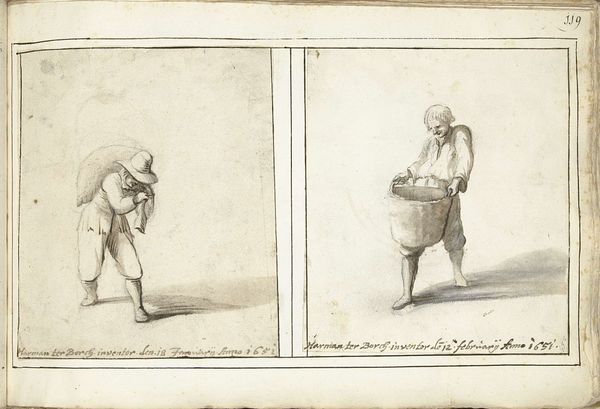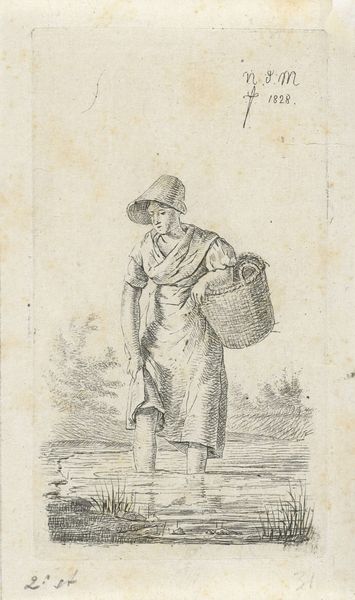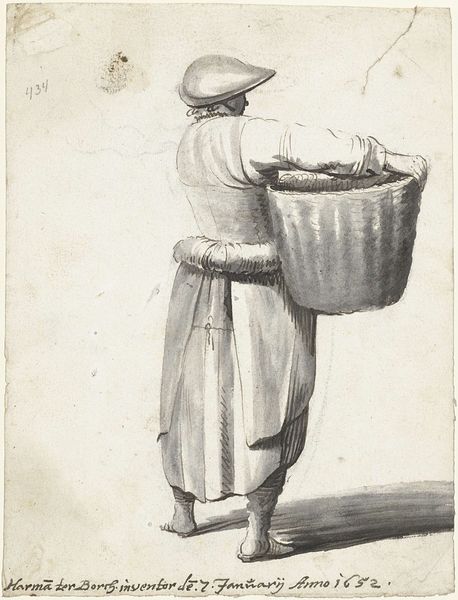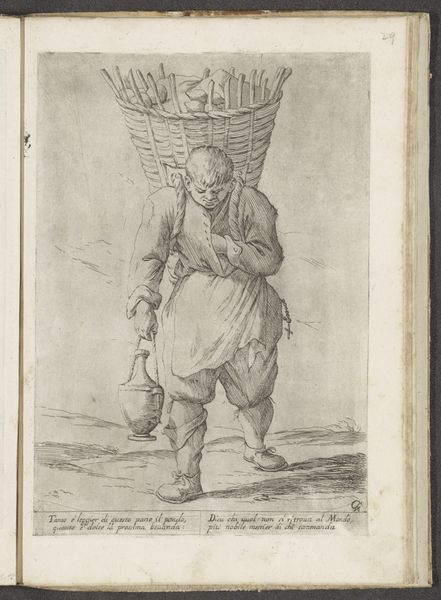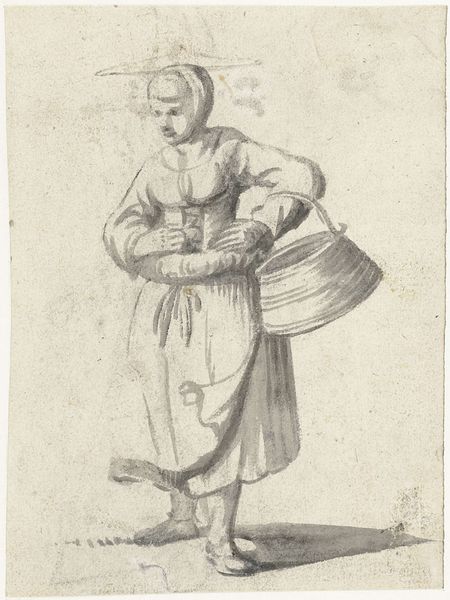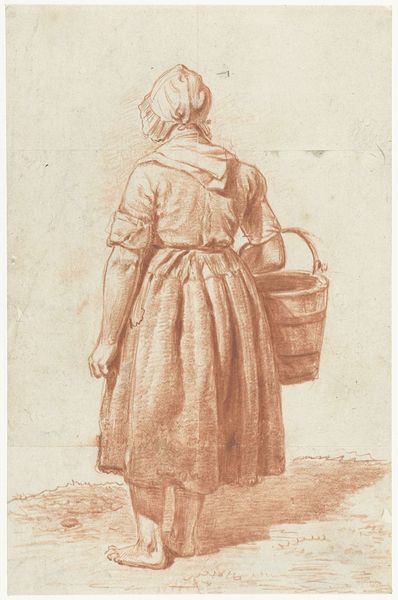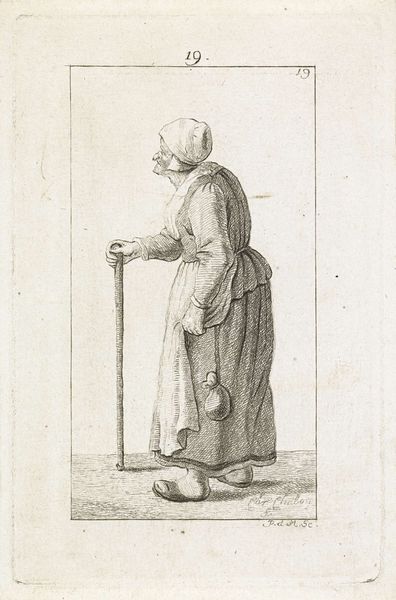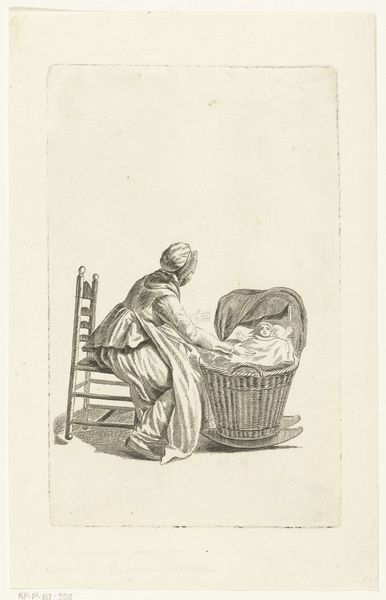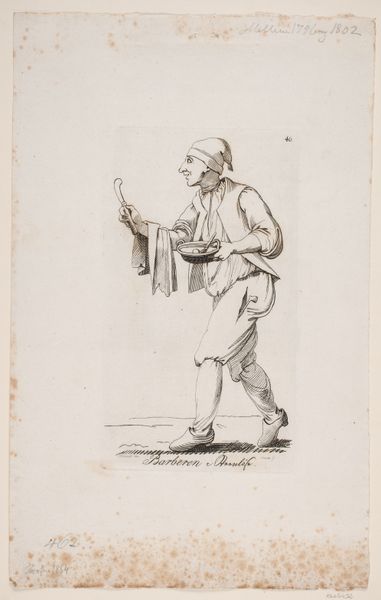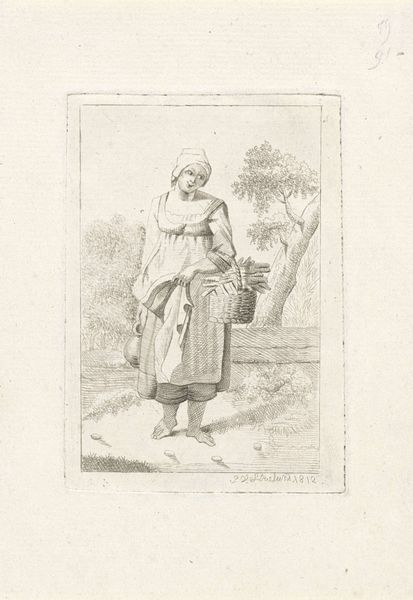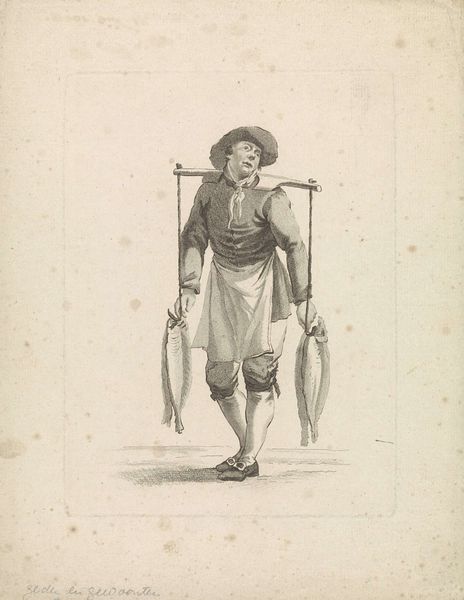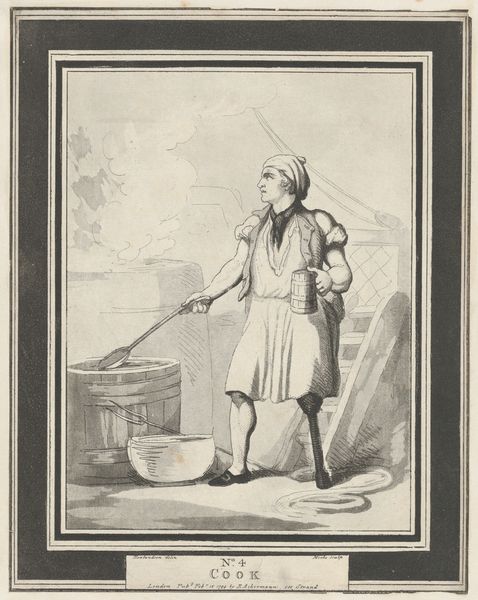
drawing, paper, ink
#
portrait
#
drawing
#
dutch-golden-age
#
pencil sketch
#
paper
#
ink
#
genre-painting
#
realism
Dimensions: height 183 mm, width 156 mm
Copyright: Rijks Museum: Open Domain
Curator: The drawing before us, titled "Man die een mand draagt", which translates to "Man Carrying a Basket," is attributed to Harmen ter Borch, dating back to the period of 1651-1652. Executed in ink on paper, it resides here at the Rijksmuseum. What's your immediate take on it? Editor: Immediately? Well, the man looks burdened, doesn't he? Not just by the weight of the basket, but also... something in his eyes, a weariness perhaps? And it's all rendered so simply, so directly. No frills, just the bare essence of labor and the weight of it etched on his face. Curator: Indeed. Consider the era: the Dutch Golden Age, marked by mercantile success, yet also underscored by the daily lives of ordinary people. Genre paintings became popular, celebrating—and perhaps subtly critiquing—everyday activities. Here, the man and his basket, drawn with such attention to detail. The basket, after all, can be seen as an early symbol for economy and trade. Editor: And it's heavy work. Notice how Ter Borch renders the hunch in his shoulders, the downward cast of his gaze. There is also some elegance in his realism, and the way his posture communicates vulnerability—as though his labor leaves him emotionally exposed. I find it touching. Curator: It reminds us of our shared humanity. Carrying burdens, literally or metaphorically, transcends time and place. There is dignity even in toil. What’s particularly captivating is the artist’s own signature; ‘inventor’. Suggesting the man himself is invented but also reflective of the creative’s capacity to translate lived human existence. Editor: Ter Borch seems to ask, what's in the basket? It makes me think about what burdens we all carry around with us day-to-day—both the visible ones, and the unseen. Curator: Perhaps this modest drawing, seemingly so simple, serves as a reminder: burdens define existence, shaping identity across the expanse of time. It asks us to see our reflection. Editor: Ultimately, this poignant and moving figure is the ancestor of everyman. And the way he's depicted helps bring us closer to those shared connections.
Comments
No comments
Be the first to comment and join the conversation on the ultimate creative platform.
